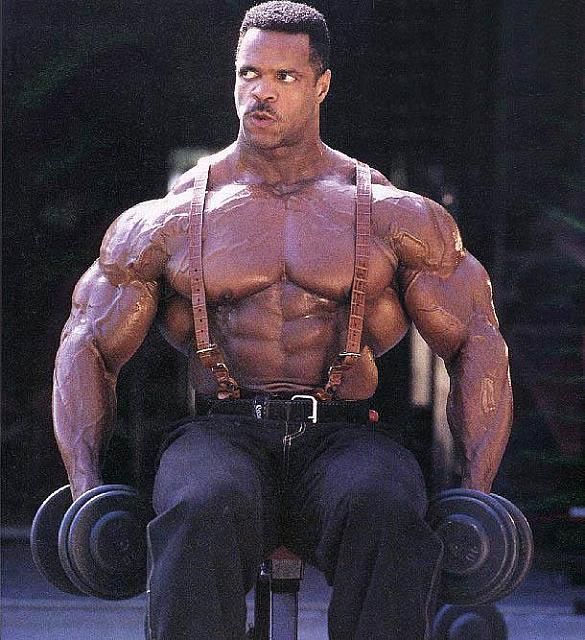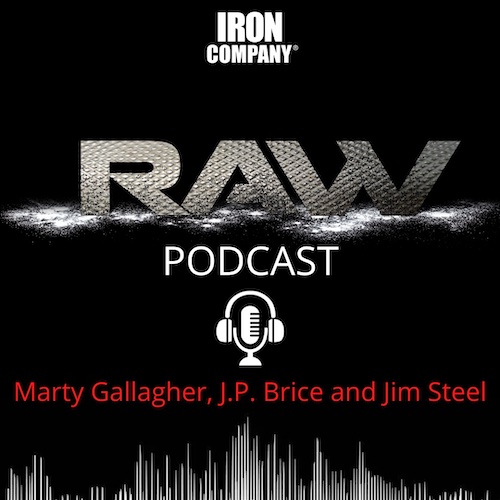
Putting a finer point on resistance training
Why bodybuilding-style resistance training is inappropriate for athletes
Paul Dillet (above): when he looked his best, he was at his weakest; bodybuilding training is not strength training
Arnold Schwarzenegger’s physique caused millions of young men nationwide and worldwide to take up resistance training. Ironically, the type and style of resistance training Arnold used during his peak competitive years would be wildly inappropriate for young men with athletic aspirations.
At his competitive peak, Schwarzenegger was performing 700 + resistance training sets per week, this spread over twelve weekly training sessions. He invented “the double-split” training routine, twice a day, six days a week, Arnold would weight train. In the morning he would go to the gym to work “minor” body parts: calves, abdominals, and forearms. A second, longer, heavier, lifting session occurred in the afternoon-evening.
My cohort, Jim Steel, head S&C coach at University of Pennsylvania for 20 years, makes the point that Schwarzenegger built his mountain of mass as a teenager not training the way he did during his peak years. Steel riffed, “Arnold’s 700-set, double-split era was really about refining, defining, and working on symmetrical deficiencies. He built his size becoming the Austrian powerlifting champion using power training tactics.”
Arnold built his humongous size at a teenager using reduced volume power training. He sought maximum strength. Arnold understood increasing strength increased muscle size. Unbeknownst to most Arnold fans, he trained for and won the Austrian powerlifting title in the 110-kilo class with a 700-pound deadlift. The 700-set per week West Coast protocols came along well after he had created his mountain of muscle mass using strength training tactics.
Everything subsequent to his teen years was polishing and refining the bulk he had already built. If the name of the game is the acquisition of size and strength, don’t look to a 700-set protocol, look to Arnold’s 700-pound deadlift protocol. While bodybuilders inspire young men to obtain muscle, the modern bodybuilder’s resistance training protocols are antithetical to athleticism.
Bodybuilding is divorced from performance. On the day of the competition, bodybuilders are weak as newborn kittens. Despite looking like archangels come to visit earth, a bodybuilder on the day of a “show” could not run 50 yards without collapsing. To optimize their muscular delineation, to bring out muscle ‘detail,’ the competitive bodybuilder leaches as much moisture out of the body as possible. When they compete they are starved, feeble, weak, drained, listless, and exhausted.
An elite pro bodybuilder will attain a sub-3% body fat percentile. Even at the local amateur levels, competitors routinely obtain 8% (or less) body fat percentiles. How ironic that when the bodybuilder looks their superhero best, they are at their weakest and most unathletic.
Bodybuilding resistance training protocols are inappropriate for athletes. A modern resistance training bodybuilding session uses procedures designed to flush a targeted muscle with torrents of blood to obtain the mythical “pump.” Bodybuilders will take set after set “past failure,” using partial reps, forced reps, drop sets and extended sets. Bodybuilding is not strength training. What does an athlete seek from resistance training? What does a bodybuilder seek from resistance training?
Athlete: usable strength of all types: isometric, isotonic, absolute, explosive, sustained
Bodybuilder: dramatic increases in lean muscle mass; correct symmetrical imbalances
The athlete uses resistance training to become bigger, stronger (absolute strength,) more explosive (explosive strength) and with a greater capacity to stay strong for extended periods (sustained strength.) Resistance training also makes any athlete faster. There is no speed without strength. No matter how fast or slow you are, getting significantly stronger will make anyone significantly faster.
Strength training makes an athlete more resistant (to injury) and more resilient (bounce back quicker) when injured. Strength training is used to increase power, strength, explosiveness and to improve the ability to exert maximally for longer durations.
The bodybuilder uses resistance training to increase the size of targeted muscles and correct the symmetrical imbalances we all have. Is your chest puny and your legs thick and heavy? This type of symmetrical imbalance can be corrected through “specialization training,” extra work, more sets, more exercises, more frequency for the lagging body part.
Specialization programs are always synced up with a calorie-surplus nutritional program: you cannot diet down while trying to bring up a lagging body part, you are nutritional cross-purposes. When trying to bring up weak legs or lagging arms, big (clean) eating is required.
Some immortal bodybuilders were ungodly strong and grew huge because they became powerlifter strong. Franco Columbo, 700-pound deadlift, 525-pound bench press, 185-pound bodyweight; Sergio Oliva, Cuban middle-heavyweight Olympic weightlifting champion; Dorian Yates, 435 x 6 barbell incline press, 455-pound 70-degree row; Ronnie Coleman, 800-pound squat and deadlift.
Others built incredible size using moderate poundage and high volume. Dr. James Wright was the health and science editor at Flex magazine for 20-years. Jim told me of watching muscle monster Paul Dillet train and obtain massive pumps using “puny poundage.” Paul Dillet was massive beyond belief yet would routinely pump his massive 21-inch biceps for over and hour, never using more than 40-pound dumbbells. He blasted the biggest deltoids in bodybuilding with 135-pound barbell presses and endless sets of lateral raises with light weights done for high reps.
The bodybuilder’s goal is not strength, the bodybuilder’s goal is muscle size. Jim Wright expressed to me his opinion that certain individuals were “wired differently” and this physiologic anomaly enabled them to obtain massive muscle pumps using free weights that appeared insignificant. Jim told me Dillet could blow his chest up to insane proportion doing set after set of high-rep wide-grip paused bench presses with 185-pounds.
The bodybuilder’s training template consists of repeatedly performing higher rep sets, mostly taken to positive failure, many sets taken past positive failure, using forced reps, drop sets and extended sets. The targeted muscle is engorged with blood, over and over.
Often, to amplify the degree of muscle fiber stimulation, the elite bodybuilder will perform an exercise without locking out a rep, nor allowing a rep to drop all the way down: the bodybuilder performs partial “burn” reps, moving within a purposefully shortened range-of-motion. Another bodybuilder strategy is to hit a long series of exercises for the same muscle, string together five exercise for biceps done without rest.
Progressive resistance training has a multitude of strategies and protocols that shift and change dependent on shifting goals: are you a bodybuilder seeking lean muscle mass and symmetry? Are you an athlete seeking to improve all types and kinds of strength and thereby improve physique and performance? Progressive resistance strategies differ. Bodybuilding is not strength training. Strength training is not bodybuilding. Be one or the other. Don’t be lukewarm. Be clear in your vision. Pick a path. Then pursue it with disciplined ferocity.
About the Author - Marty Gallagher
As an athlete Marty Gallagher is a national and world champion in Olympic lifting and powerlifting. He was a world champion team coach in 1991 and coached Black's Gym to five national team titles. He's also coached some of the strongest men on the planet including Kirk Karwoski when he completed his world record 1,003 lb. squat. Today he teaches the US Secret Service and Tier 1 Spec Ops on how to maximize their strength in minimal time. As a writer since 1978 he’s written for Powerlifting USA, Milo, Flex Magazine, Muscle & Fitness, Prime Fitness, Washington Post, Dragon Door and now IRON COMPANY. He’s also the author of multiple books including Purposeful Primitive, Strong Medicine, Ed Coan’s book “Coan, The Man, the Myth, the Method" and numerous others. Read the Marty Gallagher Biography for a more in depth look at his credentials as an athlete, coach and writer.



